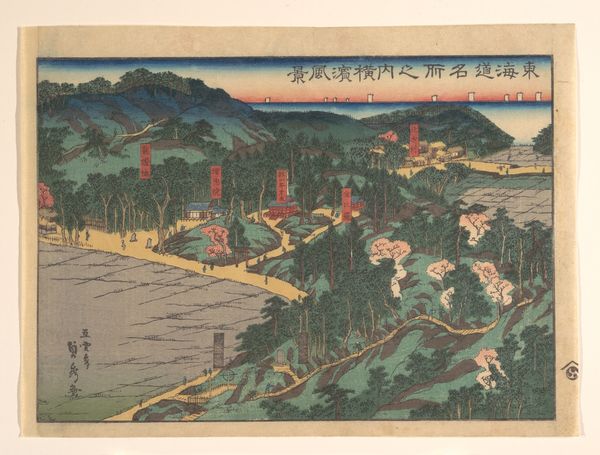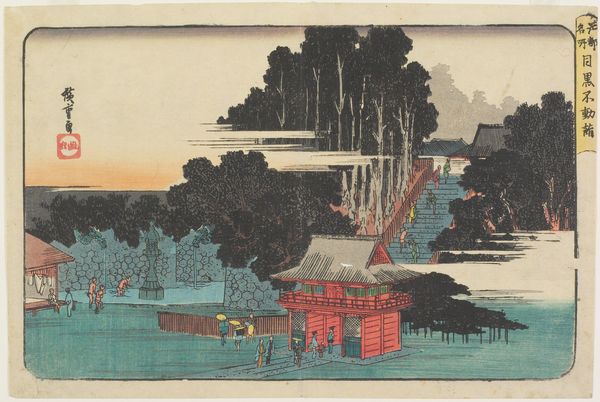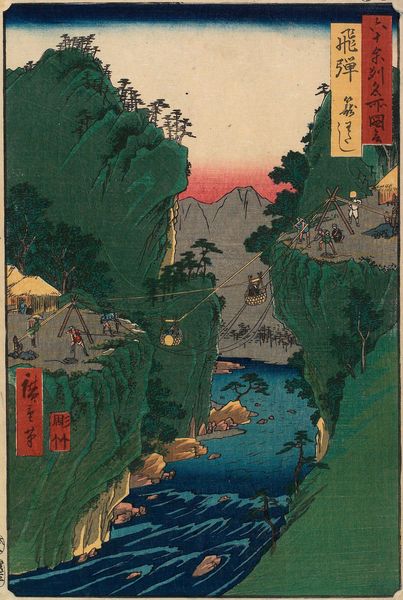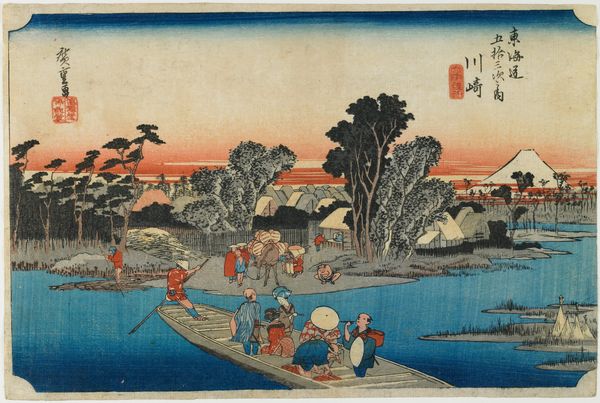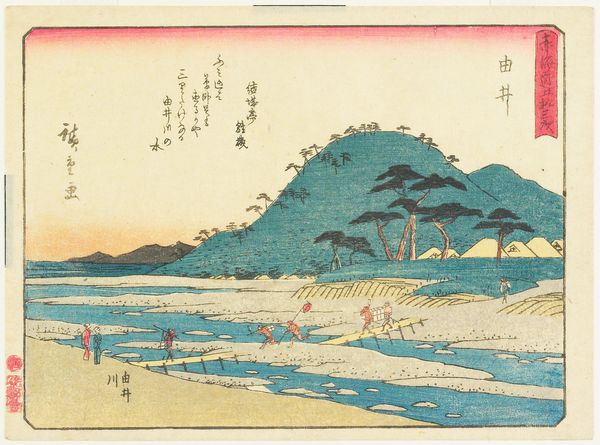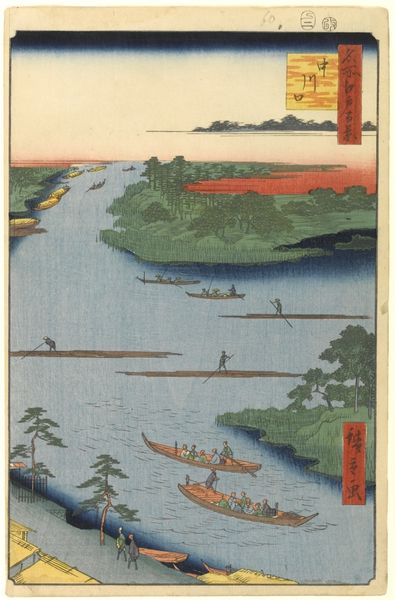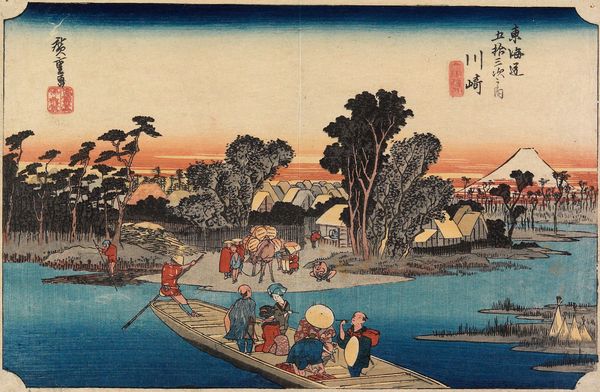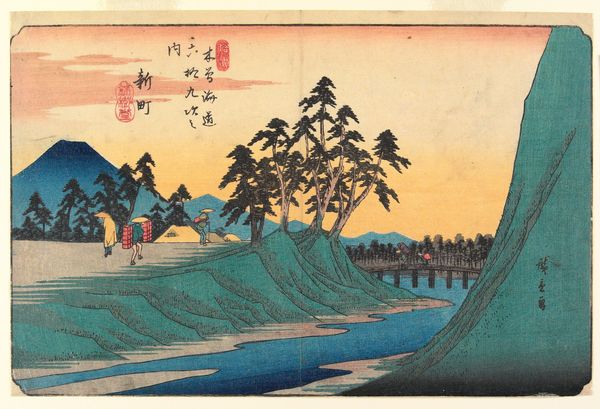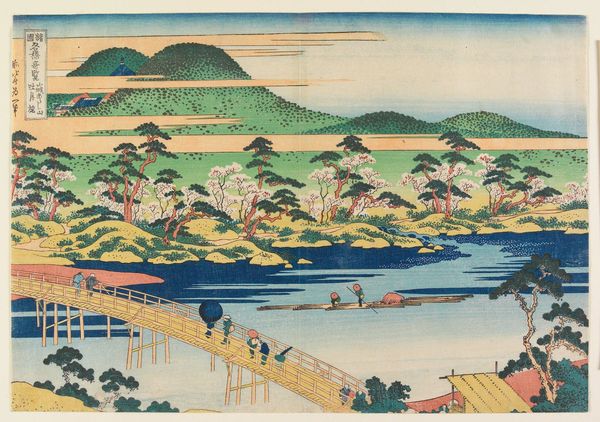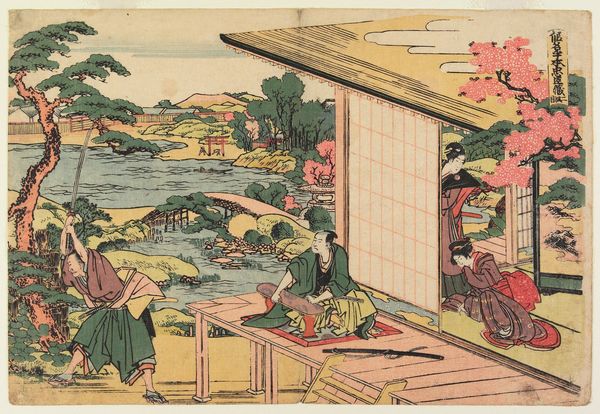
print, watercolor, ink, woodblock-print
# print
#
landscape
#
ukiyo-e
#
watercolor
#
ink
#
woodblock-print
Dimensions: 8 9/16 × 13 3/8 in. (21.8 × 34 cm) (image, horizontal ōban)
Copyright: Public Domain
Curator: Ah, Hiroshige’s “Waterfall River at Ōji,” created around 1839-1842. This woodblock print, utilizing ink and watercolor, captures a vibrant scene. The prints were often sold cheaply, sometimes even on the streets of Edo. Editor: My first thought is of leisure. Look at how the composition draws the eye from the red horizon down through the bathers to the platform with resting figures. It projects a kind of summertime communal atmosphere, doesn’t it? Curator: Absolutely, but I think understanding the labor involved is key. This wasn't a singular creation. Consider the artist, the woodblock carvers who meticulously translated the design, and the printers layering colors. Editor: You’re right, the Ukiyo-e tradition indeed reflects a complex interplay between artistry, craft, and market demands. Notice the tiny figures crossing the bridge. How does the composition connect these working or traveling figures with the carefree bathers? Curator: The placement links to larger systems of production and distribution. People are always in transit and engage the services provided at pleasure spots like this one in Ōji. It implies a connection with those making and consuming in the bustling city nearby. Editor: Thinking about accessibility and who’s depicted is key too. This artwork comes from a very rigid social context, right? Can we assume there are class dimensions to the forms of leisure on display here, with some able to sit at a resting place while others swim freely? And is it too much to read into gender with those who cover more of their bodies than others? Curator: It's crucial not to romanticize this scene. While appearing idyllic, Ukiyo-e prints often presented curated views of social life, subtly reinforcing existing power structures. What may feel "leisurely" to us involved extensive and often exploitative labour throughout the entire production. Editor: It reminds us that even scenes of supposed leisure are deeply embedded in layers of social, economic, and often unequal systems. Curator: It's essential to appreciate not just the aesthetic quality but also to acknowledge the mechanisms behind art creation and its place in consumer society. Editor: Indeed, analyzing it together in its aesthetic, material, and historical specificities, gives us richer insight, doesn’t it?
Comments
No comments
Be the first to comment and join the conversation on the ultimate creative platform.

